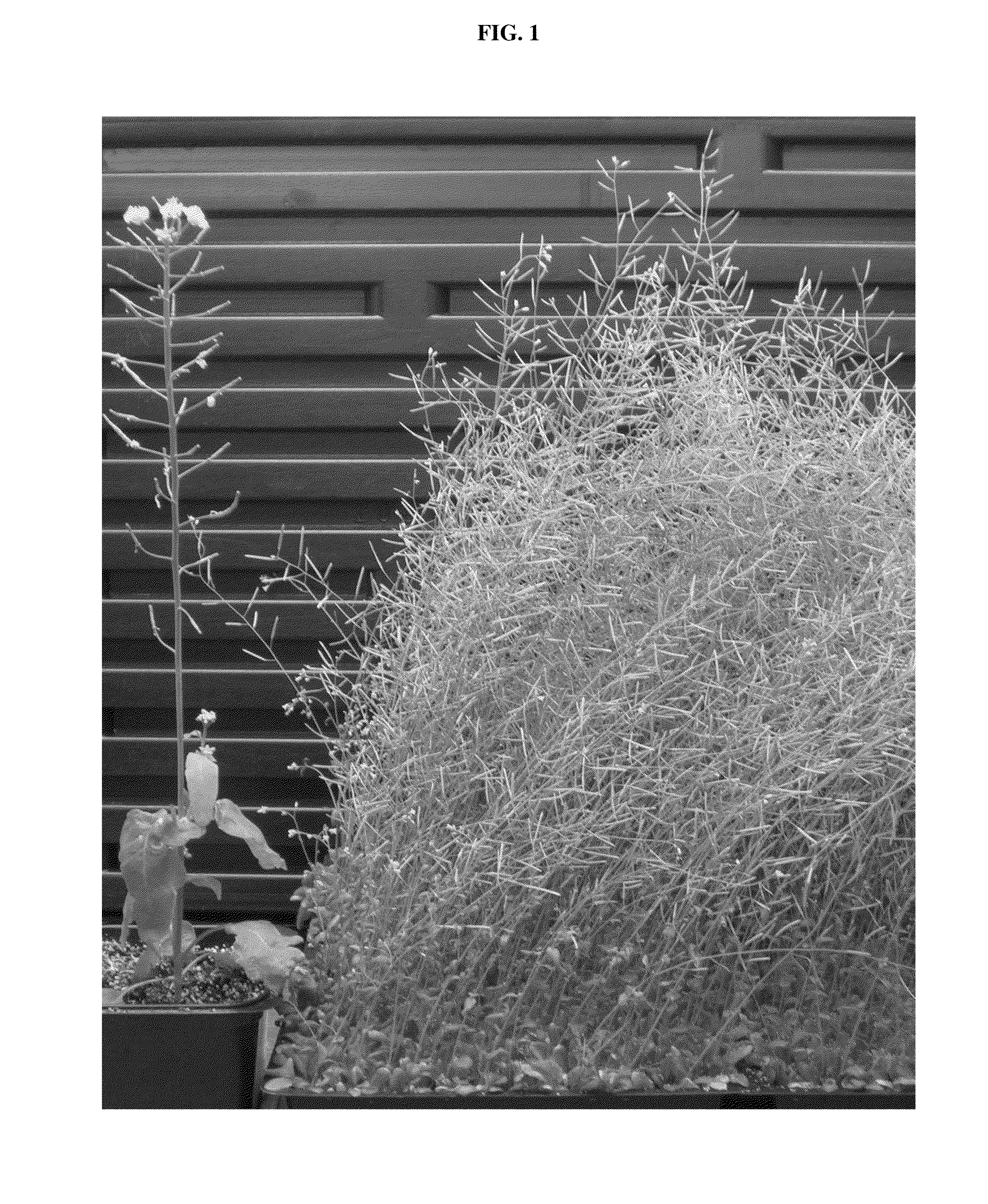Self-compatible, rapid-cycling Brassica rapa plants lacking inbreeding depression
a rapid-cycling, brassica-rapa technology, applied in the field of rapid-cycling plants, can solve the problems of affecting the use of model systems, affecting the physical characteristics of plants, and requiring additional equipment and time,
- Summary
- Abstract
- Description
- Claims
- Application Information
AI Technical Summary
Benefits of technology
Problems solved by technology
Method used
Image
Examples
example 1
Development of Self-Compatible, Rapid-Cycling Brassica rapa Plants Lacking Inbreeding Depression
[0064]Rapid-cycling Brassica rapa plants that are self-compatible were developed through introgression of self-compatibility from a Brassica rapa variety into rapid-cycling Brassica rapa plants. Pure breeding, self-compatible lines were developed through two years of backcrossing to introgress the desired characteristics. All of the developed lines demonstrated little to no inbreeding depression and possess the same self-compatibility system introgressed from the parental Brassica rapa variety after 6 generations of selfing. The lines were judged to be uniform for breeding purposes. The developed lines were selected for size, healthy appearance, rapid-cycling and self-compatibility.
[0065]From the developed lines a single line designated B3 was selected for further inbreeding and development of mutant lines based on the intergenerational stability of beneficial features, such as size, heal...
example 2
Creation and Use of Mutant Lines
[0066]The development of new self-compatible mutants provides plant variants that differ in biochemical / physiological (i.e. photosynthesis, respiration, nutrition, or other enzymes) and developmental (i.e. plant hormones, branching patterns, leaf development, or flower production) processes. Such mutants provide laboratory exercises that involve the study of different plant systems, such as plant growth or photosynthesis systems using wild type Brassica rapa plants compared to mutant plants.
A. Chemical (EMS) Mutagenesis
[0067]Large-scale mutagenesis of the Brassica rapa line B3, developed as described in Example 1, was performed to create M1 generation of mutant plants. Seeds produced from the M1 generation plants were collected and grown to produce M2 progeny plants, which were screened for mutants with educationally interesting and useful phenotypes. As mutants accumulated, they were characterized into specific classes. Such characterization included...
example 3
Development of Robust Molecular (PCR-Based) Assays for Mapping Genetic Traits in Brassica rapa and Development of Tools for Teaching Molecular Genetics
[0100]The plants of the invention may also be used to develop tools for learning molecular genetics. From plant breeding to tracking and cloning loci involved in human disease, gene mapping using DNA sequence polymorphisms is a key component of modern molecular genetics. Experiments were performed intended to identify and assemble a collection of PCR-based assays that will enable students to conduct genetic mapping experiments in Brassica rapa. The goal was to identify oligonucleotide primer pairs that reliably detect simple sequence repeat (SSR) polymorphisms between Brassica rapa line B3 and an alternative Brassica rapa variety. While there are several high-density maps published in the scientific literature (1-2 cM resolution; approximately 1200 cM total genetic map distance), none have included the present Brassica rapa derivative...
PUM
| Property | Measurement | Unit |
|---|---|---|
| generation time | aaaaa | aaaaa |
| time | aaaaa | aaaaa |
| time | aaaaa | aaaaa |
Abstract
Description
Claims
Application Information
 Login to View More
Login to View More - R&D
- Intellectual Property
- Life Sciences
- Materials
- Tech Scout
- Unparalleled Data Quality
- Higher Quality Content
- 60% Fewer Hallucinations
Browse by: Latest US Patents, China's latest patents, Technical Efficacy Thesaurus, Application Domain, Technology Topic, Popular Technical Reports.
© 2025 PatSnap. All rights reserved.Legal|Privacy policy|Modern Slavery Act Transparency Statement|Sitemap|About US| Contact US: help@patsnap.com


